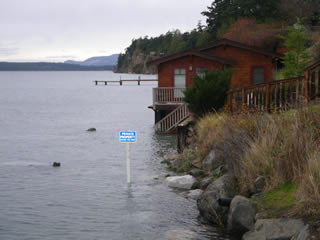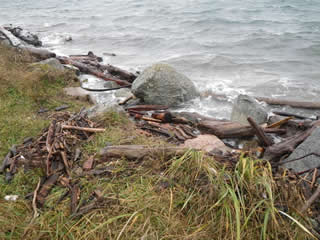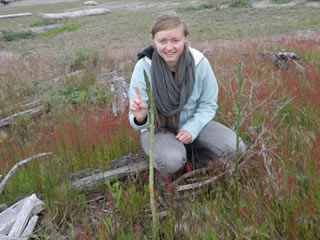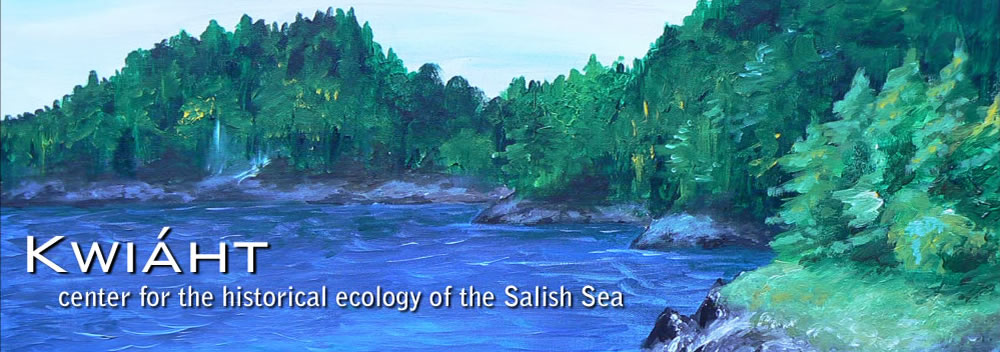Coastal Change Management

Effects of high tide with storm surge - 2012
Shoreline erosion is an unavoidable and indispensable process, transferring sediment and nutrients from land to sea as it reshapes beaches, marshes, driftwood piles, and vegetated shallow waters. Shore forms and shoreline habitats are continually moving and changing. As alongshore currents redistribute sand and gravel, beaches slowly drift in the direction of the current. Beaches and shallow vegetated habitats are always on the move. Human activity alters or accelerates these natural processes. Roofs, parking lots and roads reduce the surface area that can soak up rainfall, for example, resulting in more rainfall running off as silty, often contaminated "storm water", and increasing the rate of erosion.

Driftwood tossed on Bayshore Road by a high tide
Roads built along the back beach, just above the highest historical tides, are common in the San Juan Islands. Some roads were built on filled lagoons or form dikes across tidal sloughs, reducing tidal circulation and accelerating silt accumulation. As climate change and sea level rise accelerate erosion, roads can prevent beaches from migrating inland to higher ground. After the seaside of the road is scoured down to rock or gravel, the waves undercut the road and compromise its integrity. Both the beach and the road are lost.

Eroding bluff - Patos Island
Higher tides, rising sea levels, increased storm strength affecting winds and waves, and increasing rainfall and rain runoff over shore bluffs, all contribute to the rate of erosion. Climate change is forecast to result in more violent storms in the Salish Sea, and changes in wave heights equivalent to a two to three-foot rise in sea levels. Erosion and flooding will threaten hundreds of island homes, miles of arterial roads, and critical infrastructure.

Weeks Wetland inundated by a storm surge
Tidal sloughs, lagoons, shallow marshes, driftwood, and vegetated sand banks or dunes can absorb wave energy, slowing erosion and preserving habitat types that are critical for shorebirds, crabs and fish. "Living shorelines" rely on soft materials elastically connected by roots to rebuild eroded areas and defend homes from tides, rather than rigid bulkheads, because they provide wildlife habitat and can bend, shift, and repair themselves.

Elli Blaine with wild asparagus Fish Bay Spit dunes
Kwiáht is using Fisherman Bay on Lopez Island to monitor and forecast changes in storm strength, erosion and flooding in the San Juan Islands. This includes enlisting landowners to photograph each year's highest tides, so that their actual extent can be indexed to wind speeds. Kwiáht also launched a pilot project in Fisherman Bay to refine and test designs for living shorelines using local materials and plant species.
